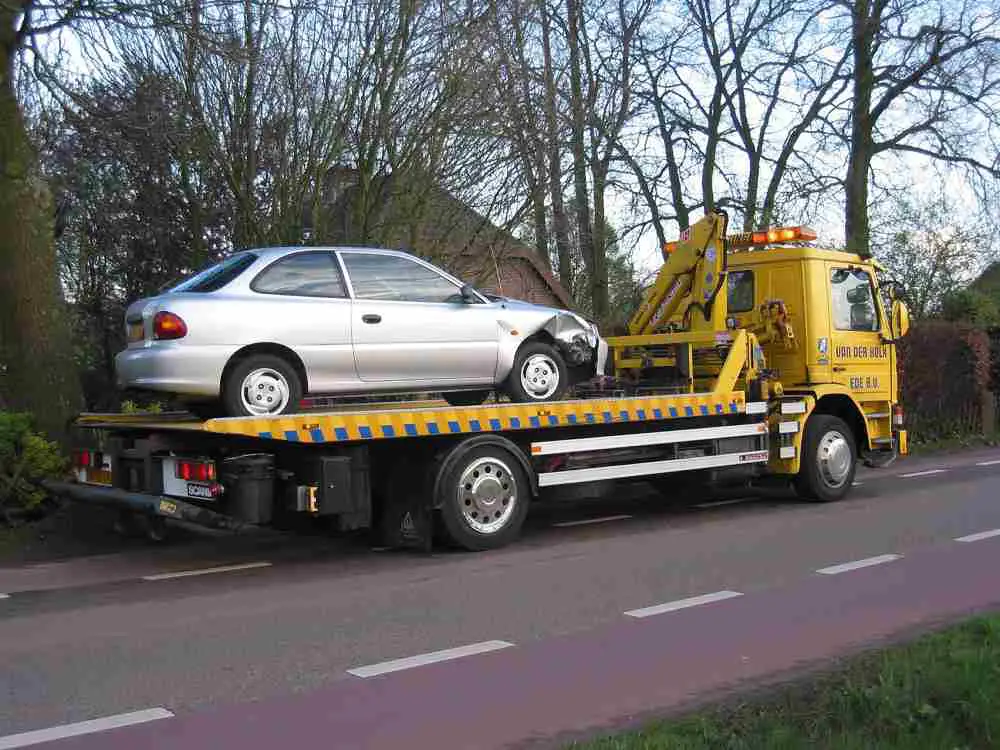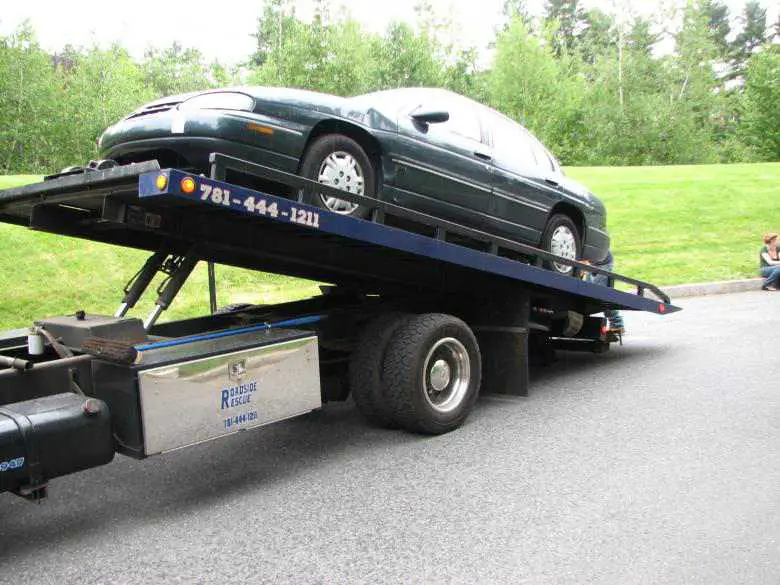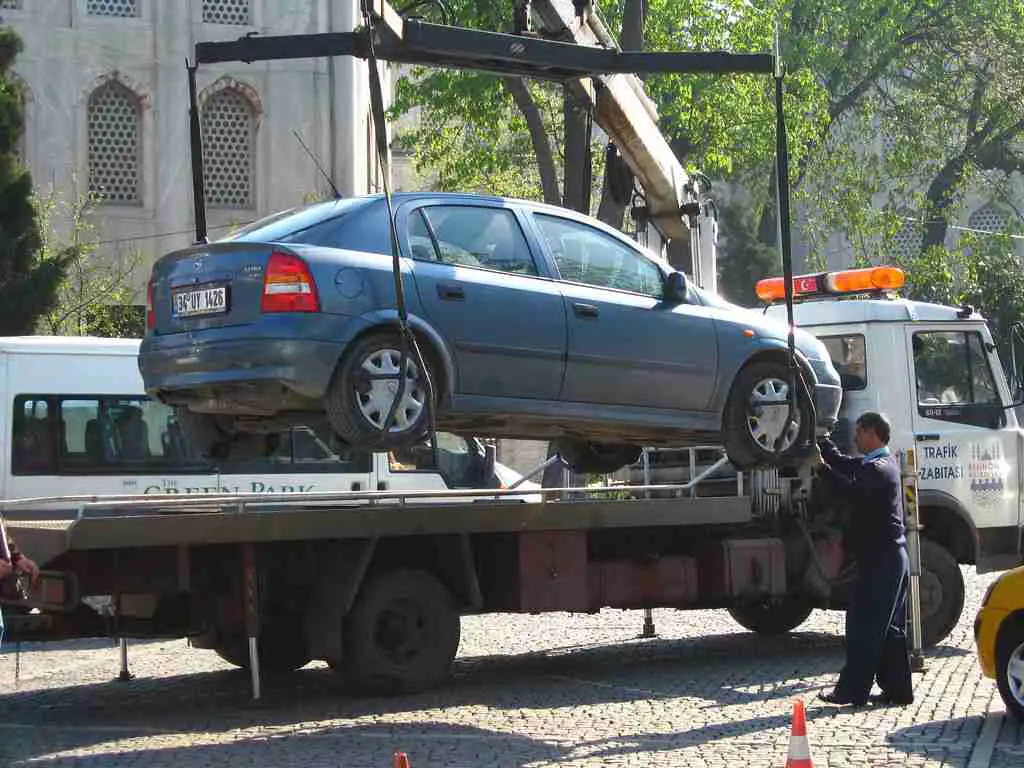If you’ve ever had your car towed, you know the stress and frustration that can come with it.

Not only do you have to deal with the inconvenience of not having your vehicle, but you also have to worry about paying potentially high fees to get it back.
But did you know that it is possible to get your towed car back without paying in California?
This comprehensive guide will provide you with all the information you need to understand the process of retrieving a towed car in California without paying.
We’ll cover how to find out where your car was towed to, how to contact the tow company or impound lot to obtain release information, and what to do if you want to dispute the tow or fees.
By the end of this guide, you’ll have a clear understanding of how to handle this situation and get your car back without breaking the bank.

Step 1: Find out where the car was towed to
The first step in getting your towed car back is to find out where it was taken. There are a few different ways you can do this:
Check for a tow notice:
When your car is towed, the tow company is required to leave a notice on the car with information about where the car was taken and how to retrieve it.
This notice should include the address of the impound lot or tow yard, as well as the contact information for the tow company.
Contact the police department:
If you are unable to locate a tow notice, you can try contacting the local police department.
They should be able to provide you with information about where your car was taken and how to retrieve it.
Contact the tow company:
If you are unable to locate a tow notice and are unable to get information from the police department, you can try contacting the tow company directly.
They should be able to tell you where your car was taken and what is needed to retrieve it.
It’s important to have the exact location of the impound lot or tow yard where your car was taken, as this will be the place where you will need to go to retrieve it.
Make sure to take note of the address and contact information for the tow company or impound lot, as you will need this information in the next step of the process.
Step 2: Contact the tow company or impound lot to obtain release information
Once you know where your car was towed to, the next step is to contact the tow company or impound lot to find out what is needed to obtain the release of your car. Here’s what you’ll need to do:
Call the tow company or impound lot:
Using the contact information you obtained in step 1, call the tow company or impound lot to inquire about the process for releasing your car.
They should be able to provide you with a list of requirements and any necessary forms that need to be completed.
Gather the necessary documents:
The tow company or impound lot will likely require certain documents in order to release your car.
These may include proof of ownership (such as a title or registration), a valid driver’s license, and proof of insurance.
Make sure you have these documents ready before attempting to retrieve your car.
Pay any outstanding fees or fines:
You may be required to pay any outstanding fees or fines before your car can be released.
These may include storage fees for keeping your car at the impound lot, as well as any towing or administrative fees.
The tow company or impound lot should be able to provide you with a breakdown of these fees.
Obtain a release form:
In order to retrieve your car, you will need to obtain a release form from the tow company or impound lot.
This form will indicate that you have satisfied all the necessary requirements and are authorized to retrieve your car.
Make sure to carefully review the release form to ensure that all the information is correct before signing.
It’s important to carefully review the requirements for releasing your car and make sure you have everything you need before attempting to retrieve it.
If you have any questions or concerns about the process, don’t hesitate to ask the tow company or impound lot for clarification.

Step 3: Consider hiring an attorney or using other resources to dispute the tow or fees
In some cases, it may be possible to dispute the validity of the tow or the fees being charged.
If you believe that your car was towed unfairly or that the fees being charged are unreasonable, you may want to consider hiring an attorney or seeking the help of consumer protection agencies or mediation services.
These resources can help you navigate the process of disputing the tow or fees and may be able to assist you in getting your car back without having to pay.
Here are some steps you can take to dispute the tow or fees:
Gather evidence:
If you want to dispute the tow or fees, it’s important to have evidence to support your claim.
This may include photographs of the location where your car was towed, witness statements, or any other documentation that supports your case.
Hire an attorney:
If you are considering disputing the tow or fees, it may be a good idea to hire an attorney to represent you.
An attorney can help you build your case and negotiate with the tow company or impound lot on your behalf.
Seek the help of consumer protection agencies:
Consumer protection agencies, such as the Better Business Bureau or the Department of Consumer Affairs, may be able to help you resolve disputes with tow companies or impound lots.
They may be able to mediate a resolution or provide you with information about your rights as a consumer.
Consider using mediation services:
Mediation services, such as those offered by small claims court, may be able to help you resolve disputes with tow companies or impound lots without going to court.
A mediator can facilitate negotiations and help you reach an agreement with the other party.
It’s important to carefully consider your options before deciding to dispute the tow or fees.
Hiring an attorney or seeking the help of consumer protection agencies or mediation services can be costly, and it may not always be possible to successfully dispute the tow or fees.
However, if you believe that you have a strong case and are willing to invest the time and resources, disputing the tow or fees may be worth considering.
Step 4: Retrieve the car and any personal belongings
Once you have met the release requirements and have obtained the necessary documentation, you can retrieve your car from the tow company or impound lot. Here’s what you’ll need to do:
Go to the tow yard or impound lot:
Make sure to bring the release form and any other required documents with you when you go to retrieve your car.
You may also be required to show identification, such as a driver’s license.
Pay any remaining fees:
If you haven’t already paid all the fees associated with retrieving your car, you will need to do so at this time.
Make sure to bring enough money to cover any remaining fees, as the tow company or impound lot may not accept credit or debit cards.
Sign the release form:
When you arrive at the tow yard or impound lot, you will need to sign the release form to indicate that you have retrieved your car.
Make sure to carefully review the form and ensure that all the information is correct before signing.
Retrieve your personal belongings:
Don’t forget to retrieve any personal belongings that were left in the car at the time of the tow.
These may include your registration and insurance documents, any valuables, or items of sentimental value.
It’s important to follow the instructions of the tow company or impound lot when retrieving your car.
Make sure to bring all the necessary documents and be prepared to pay any remaining fees.
Once you have retrieved your car and any personal belongings, you should be able to drive away and resume your normal activities.

Conclusion
Getting your towed car back without paying in California is a process that requires careful planning and attention to detail.
By following the steps outlined in this guide, you can navigate the process and retrieve your car without breaking the bank.
Remember to find out where your car was towed to, contact the tow company or impound lot to obtain release information, consider disputing the tow or fees if necessary, and retrieve your car and any personal belongings.
With the right approach, you can get your car back and get back on the road.
What should I do if I can’t afford to pay the fees to retrieve my towed car?
If you are unable to pay the fees to retrieve your towed car, you may want to consider negotiating a payment plan with the tow company or impound lot.
It’s also a good idea to consider seeking financial assistance from organizations such as charities or community resources.
If you believe that the fees being charged are unreasonable, you may want to consider disputing the fees or seeking the help of an attorney or consumer protection agency.
Can the tow company or impound lot charge me storage fees for keeping my car?
Yes, the tow company or impound lot is generally allowed to charge storage fees for keeping your car.
These fees can add up quickly, so it’s important to retrieve your car as soon as possible to avoid incurring additional charges.
What happens if I can’t retrieve my car within a certain time frame?
If you are unable to retrieve your car within a certain time frame, the tow company or impound lot may be allowed to sell it at a public auction.
It’s important to retrieve your car as soon as possible to avoid this outcome.
Can I get my car back if it has been impounded for a violation, such as driving without a license or insurance?
In some cases, it may be possible to retrieve your car even if it has been impounded for a violation. However, you may need to pay any outstanding fines or fees and resolve the violation before you can retrieve your car.
It’s a good idea to contact the tow company or impound lot to discuss your specific situation and see what steps you need to take to retrieve your car.